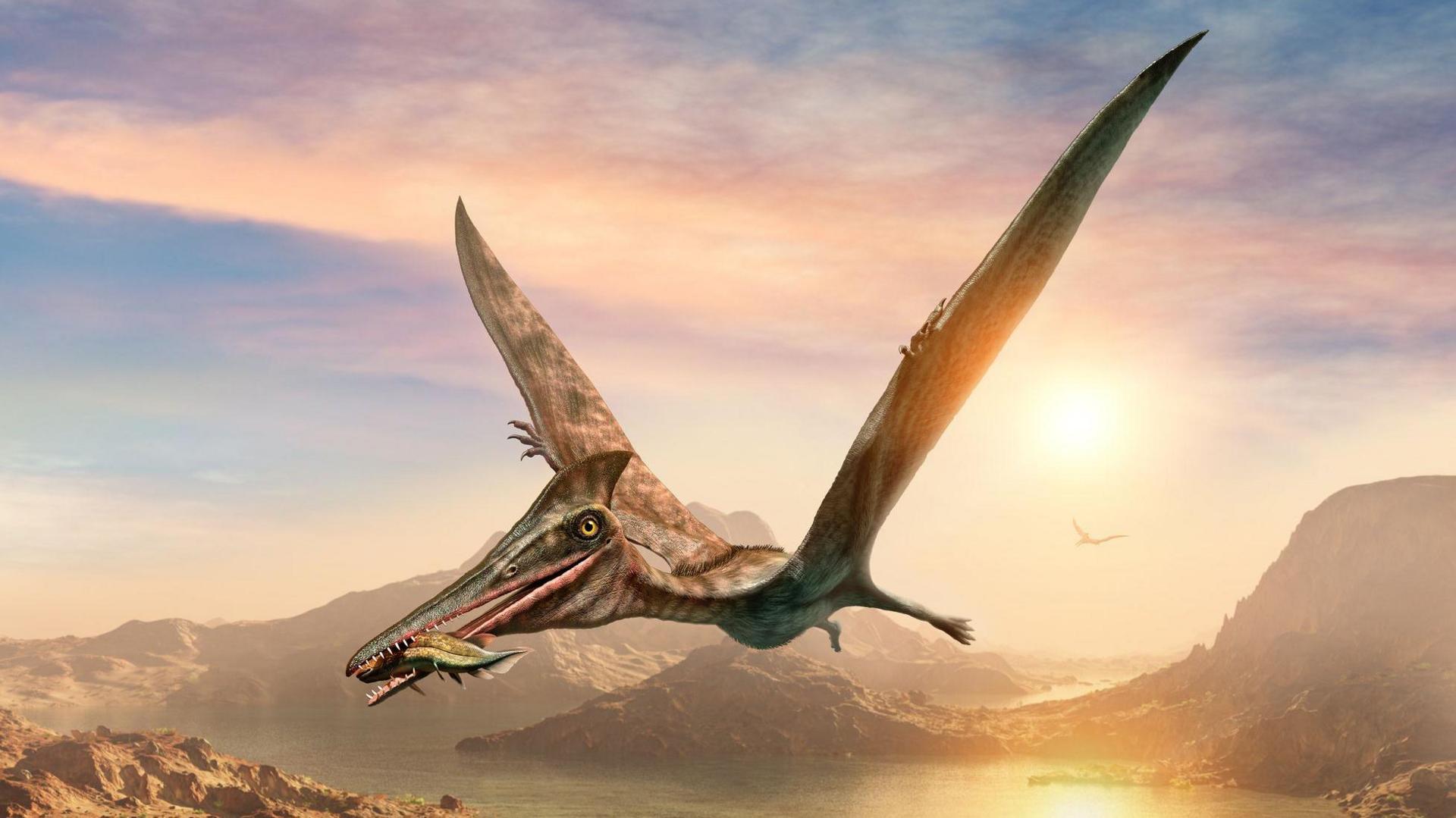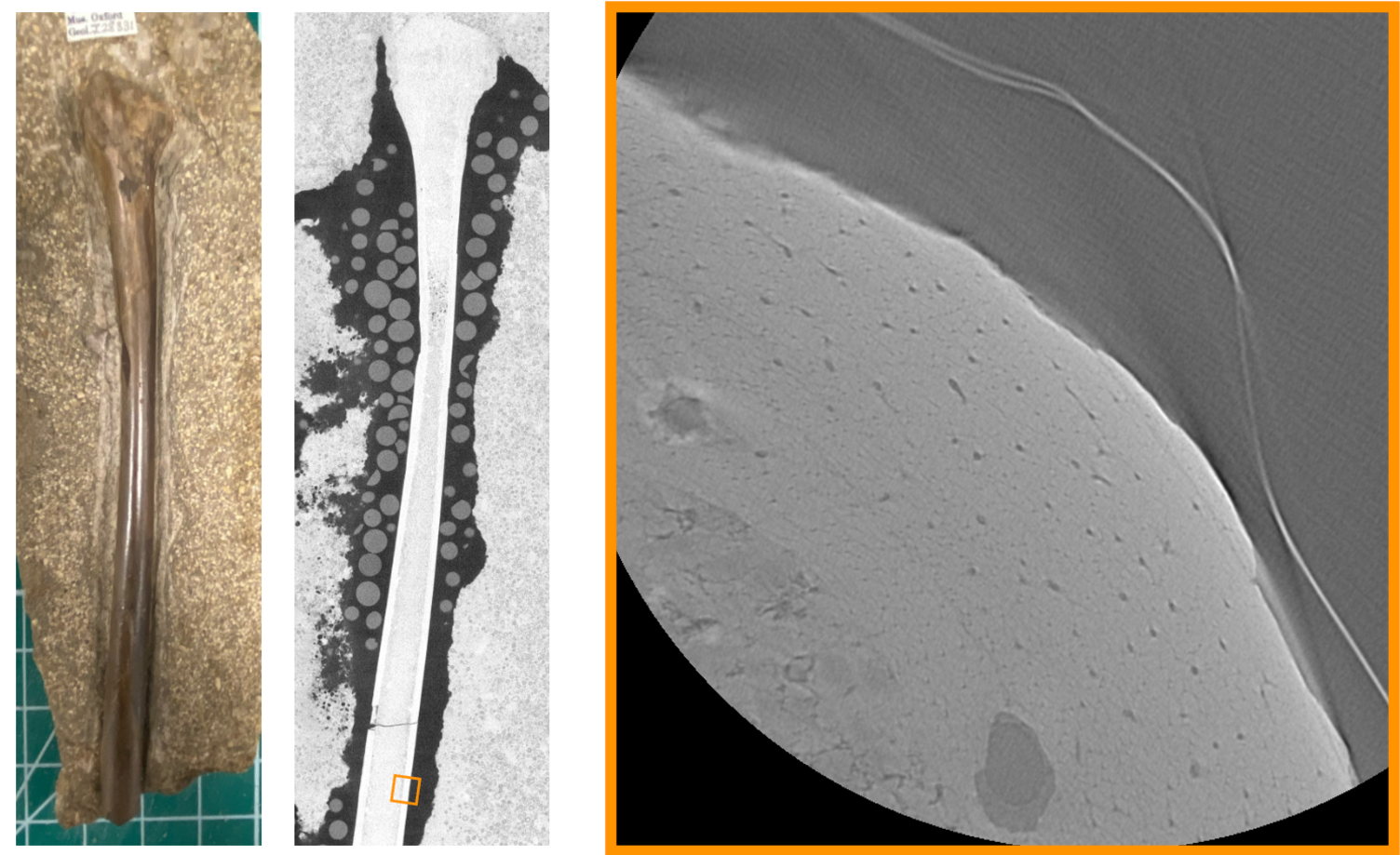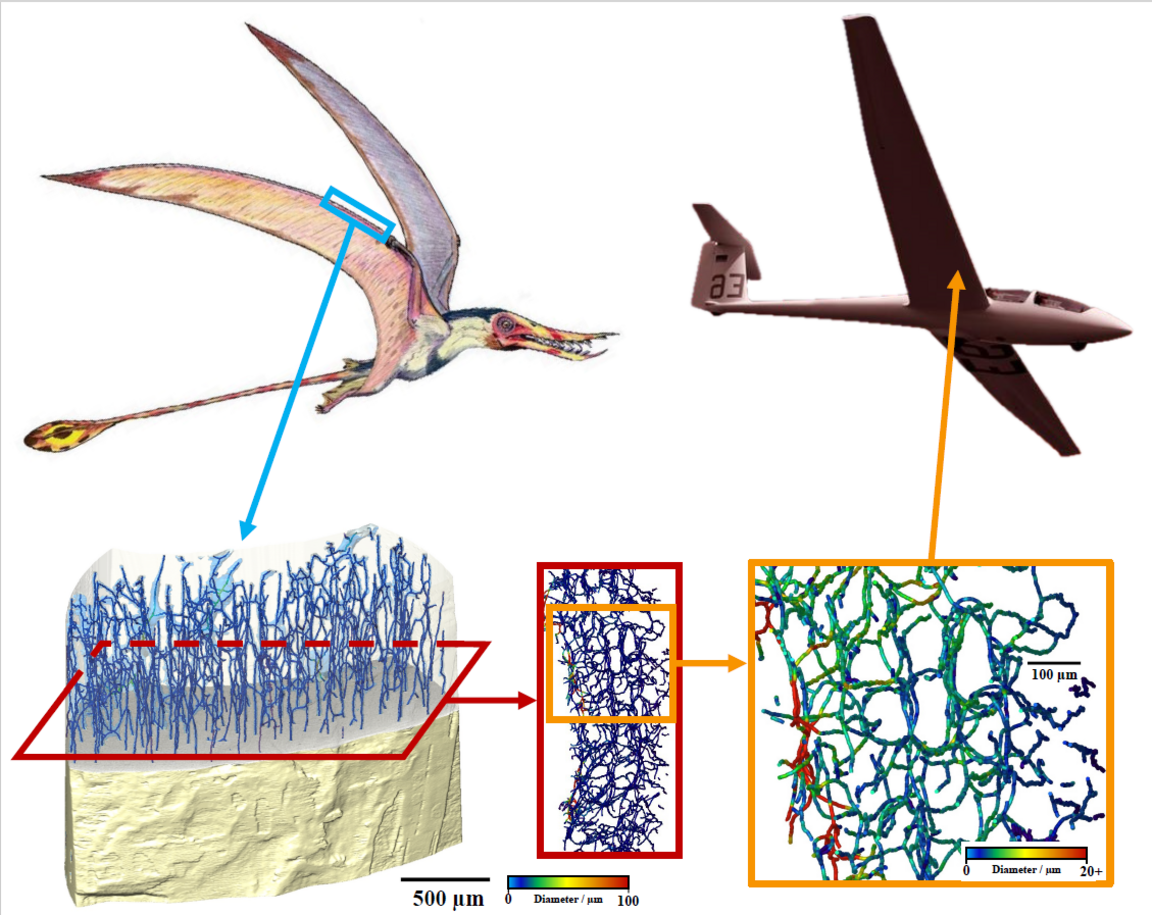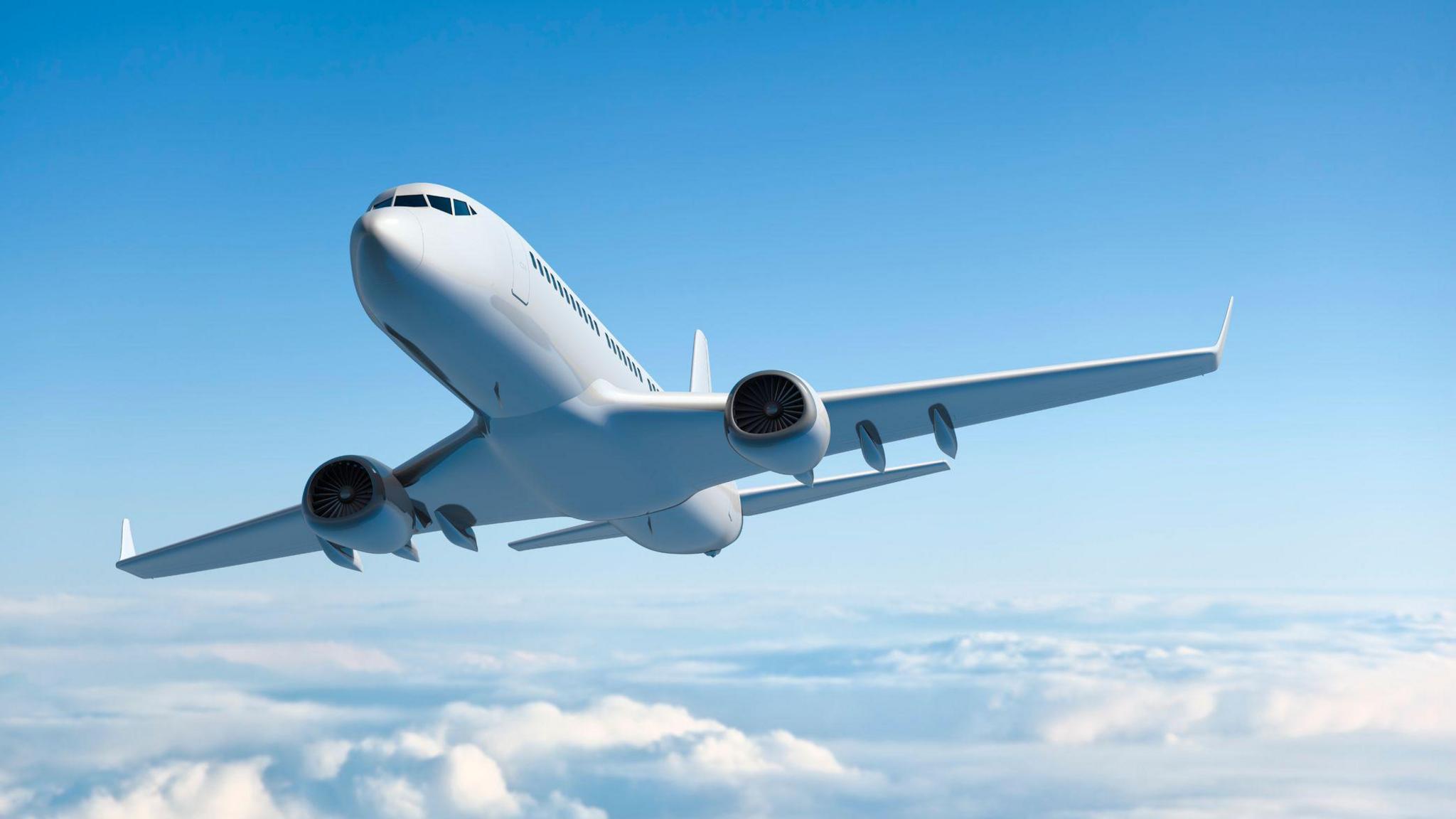How can pterosaur bones help aeroplane designers?

- Published
The structure of an ancient flying reptile's bones could be the key to more efficient and safer aeroplanes, according to new research.
Bones are very strong, and so it makes sense that a close cousin of the dinosaur's bones would be even stronger but the winged creatures' bones had to be light as well, to help them fly.
So, scientists from The University of Manchester used X-ray machines to examine fossilised bones of pterosaurs to see what secrets they could uncover.

This shows a photo of the bone in the first picture, showing it is still trapped in the rock. The next picture shows an X-ray CT scan of the full bone, with a little orange square. The final picture on the right shows that little orange square if we zoom in, which shows all the tunnels inside of the pterosaur bone.
They discovered that pterosaur bones contained a complex network of tiny canals, making them both lightweight and incredibly strong.
The researchers say this could be the start of a paleo-biometrics revolution - in other words, other people could start looking to the ancient creatures to help with other inventions and engineering.
More prehistoric stories
New giant dinosaur species discovered in Egypt
- Published20 January
'Surprising' answer for birthplace of dinosaurs
- Published29 January
Mystery of how flying reptiles took to the skies finally solved
- Published8 January
How did the scientists do it?

How the design of pterosaur bones could be applied to planes
The study's lead author, Nathan Pili, a PhD student at The University of Manchester, told BBC Newsround the X-Rays allowed the team to study the pterosaur bones in incredibly intricate detail.
"[The team] used powerful X-ray scans, similar to what doctors use to check for any breaks in our bones but even more powerful, to look inside the fossil bones without breaking them.
"This let them see details inside the bone that are even smaller than a strand of hair."
Why is the discovery important?
Nathan told Newsround the findings can help aerospace engineers (people who design planes) make aeroplanes more efficient and safer.
He explained: "By copying the way pterosaur bones were built, engineers could design lighter and stronger materials for planes. This could help airplanes use less fuel, making flying more efficient and better for the planet.

The team thinks the discovery could help future designers and engineers
"Even more exciting, the tiny tunnels inside the bones could mean that engineers can build wings with built-in sensors that check if everything is working properly in real time.
"And even cooler—these materials could one day help wings repair themselves if something goes wrong, just like how our bodies heal cuts and bruises."
Pterosaur fact file
Pterosaurs were the largest flying animal to ever live on Earth
They were the first animals after insects to have the ability to fly
They weren't birds or bats - they were reptiles
They lived around 215 million years ago but died out when the dinosaurs did
There were lots of different species of pterosaur - the smallest were no bigger than a sparrow, and the largest had a wingspan of up to 40 feet (12 metres), which is longer than a bus
